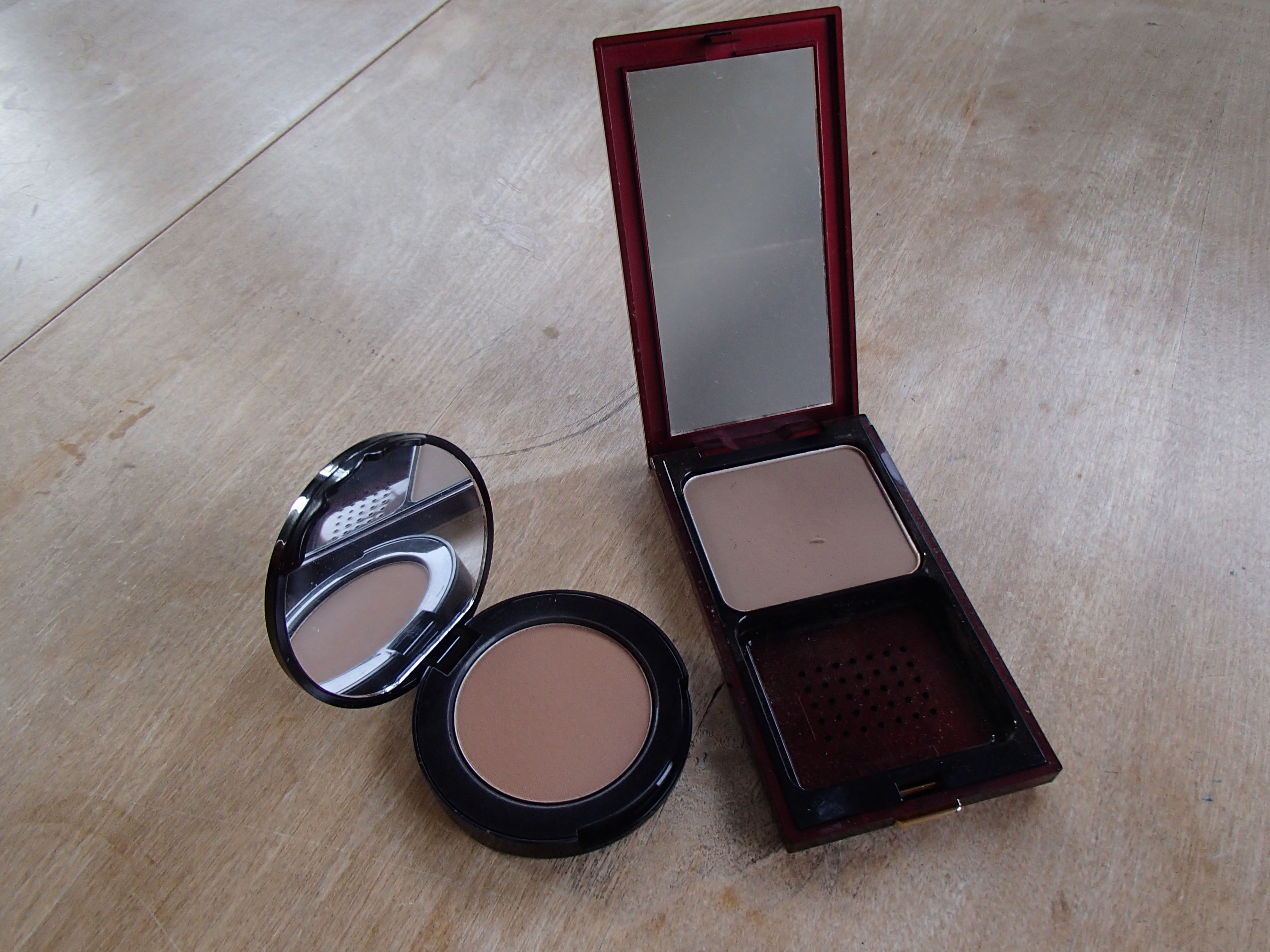
Makeup Basics: Bronzer and Contouring Products
Part nine of the Makeup Basics series.
Let’s start off by being clear about something – bronzing and contouring are two entirely separate things. I’m lumping them together into one post though since a lot of people use products interchangeably for both. So what’s the difference, exactly?
Here are the differences according to a makeup artist who has completed a cosmetology program and is a certified professional:
Bronzing – using a warm-toned, slightly-darker-than-skintone product to give yourself a sunkissed look. The product is usually placed on the high planes of your face where the sun would normally hit – forehead, cheeks, nose, chin.
Contouring – using a cooler-toned, slightly-darker-than-skintone product to make areas of your face appear to recede. The product is usually placed in areas where you want to mimic shadows cast by your bone structure – hollows of the cheeks, sides of the nose, temples, hairline.
So what products are you supposed to use, anyway?
Bronzer:
What is it?
A powder, cream or liquid that gives you a sun-tanned look.
Why might I want to use this stuff?
Bronzer is great to mimic an actual tan – especially if you’re wearing sunscreen every day like you should. It can also be used (very sparingly!) to warm up a foundation that’s a bit too light, which is useful if your best foundation color changes slightly during the spring or summer.
How do I choose the right one for me?
Formula
Bronzers come in powder, cream and liquid formula, though powders are the most common. Which type to choose comes down to your personal preference (what type you find easiest to apply) and what other products you’re using. Powder bronzers work well over most foundations, but cream and liquid formulas usually don’t work as well if you wear powder foundation.
Finish
Some bronzers are completely matte, and others have a bit of sheen or sparkle. The more luminous ones are fantastic if you want to give yourself a bit of glow; however, if you plan on using your bronzer for bronzing and contouring (see below), a matte product is usually a better choice.
Color
Bronzers usually are a little bit (or a lot) on the warm side. Getting a bronzer that’s too warm can make it appear a little bit orange, especially if your natural skin undertones are cool. It’s also important to get a product that’s not too dark for your skin tone.
My Favorites
I don’t always use bronzer for its intended purpose since I tan easily, but when I do, I use Too Faced Chocolate Soleil (the most interesting beauty blogger in the world!).
Contouring Color:
What is it?
Again, a powder, cream or liquid, but this time, you’ll be using it to make it look like different parts of your face recede.
Why might I want to use this stuff?
If you’ve taken any art classes, you’re probably already aware that dark areas appear further away (recede) and light areas appear closer (project). Makeup is really just painting on a 3D canvas, so you can harness that optical illusion to subtly change the shape of your face. Putting a darker shade under your cheekbones can make them appear sharper, using it along your hairline can help hide a high forehead, etc. This is more of an intermediate-to-advanced technique, so don’t feel like you have to do it all the time. I plan to make some tutorials in the future, but until then, you can find great ones on youtube by Lisa Eldridge, Wayne Goss and pixiwoo.
How do I choose the right one for me?
Finding a great contour color can be complicated, mostly because not many products are specifically labelled as contouring products. You can find good colors for contouring across a huge range of categories: liquid or powder foundation, blush, bronzer, dedicated contour/sculpting powder, even eyeshadow. There are a few main things to look for though.
Color
Probably the number one most important thing, at least in my opinion. A good contour color will be a couple shades darker than your skin, and be cool-toned or grey-toned – after all, that’s the color that shadows are, right?
Finish
Matte is the way to go for contouring. Anything reflective or shimmery will make the area seem to project, which sort of negates the purpose. Besides, shadows don’t sparkle.
Formula
Just like with bronzers above, the formula you choose depends on your preference, what foundation you’re using it with, and what’s available in a color that works for you.
My Favorites
My hands-down favorite contour color is Kevyn Aucoin Sculpting Powder, which I reviewed here. I’ve also used Too Faced Chocolate Soleil, and it doesn’t look too orange on me.
I generally don’t make recommendations for things I don’t use/haven’t tried, but since this is a tricky product, here are some other suggestions I’ve seen around the web-
Light skin tones – NYC Sunny bronzer, Too Faced Milk Chocolate Soleil bronzer
Universal – NYX Taupe blush, Chanel Joues Contraste in Notorious (discontinued), Burberry blush in Earthy, Dolce & Gabbana blush in Tan, and Illamasqua Cream Pigment in Hollow
Fin.
You made it to the end! Feel free to comment below if you still have any unanswered questions.

Leave a Reply